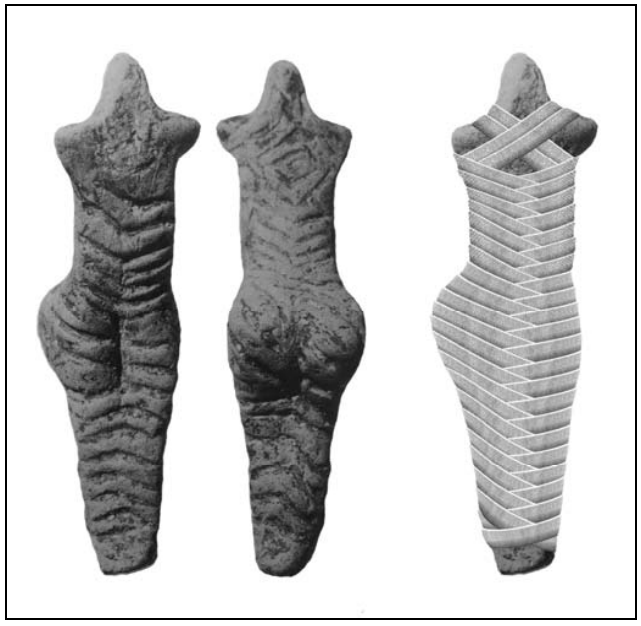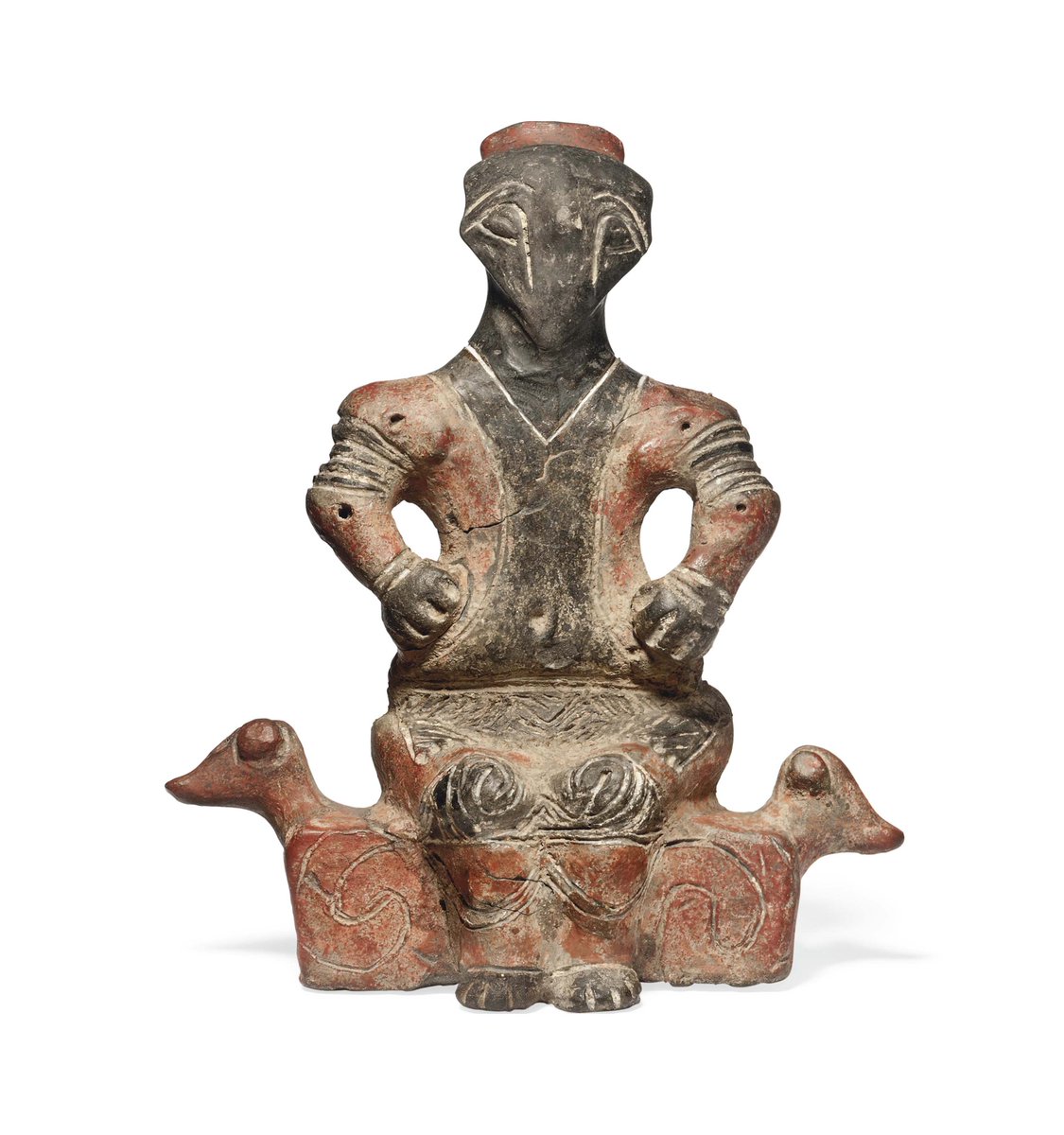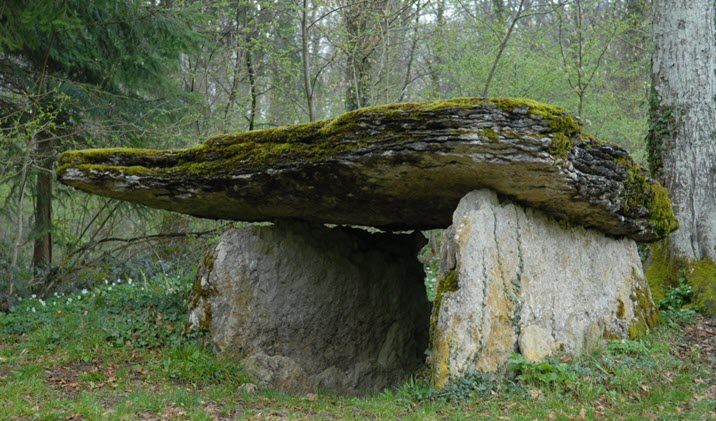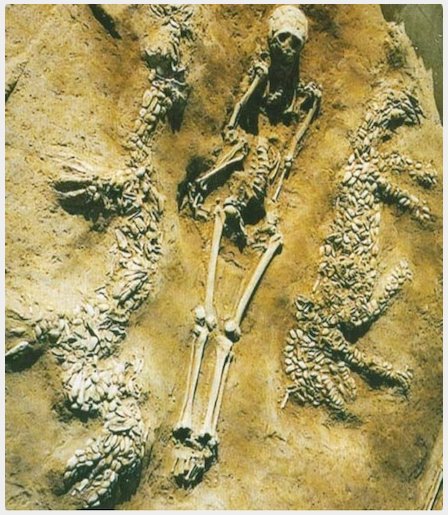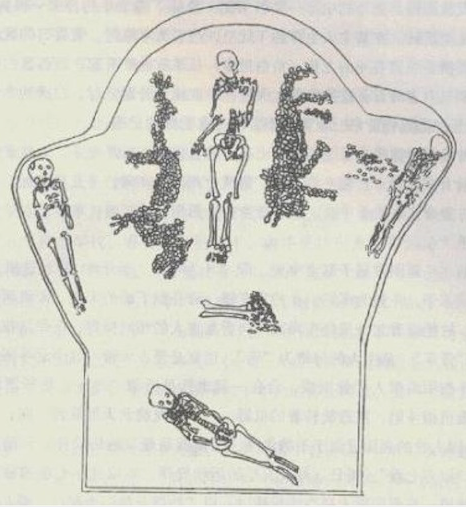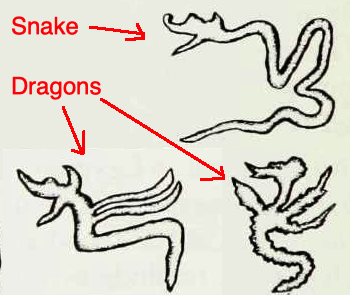
Thread: Objects made of stone, excavated in houses of the Mesolithic Lepenski vir culture, 6300 – 5990 BC, Danube Iron Gates gorge, eastern Serbia. en.wikipedia.org/wiki/Lepenski_… All have carvings on the surface. Lengths: 35-45cm. Classified as "stone sceptres". But are they? 
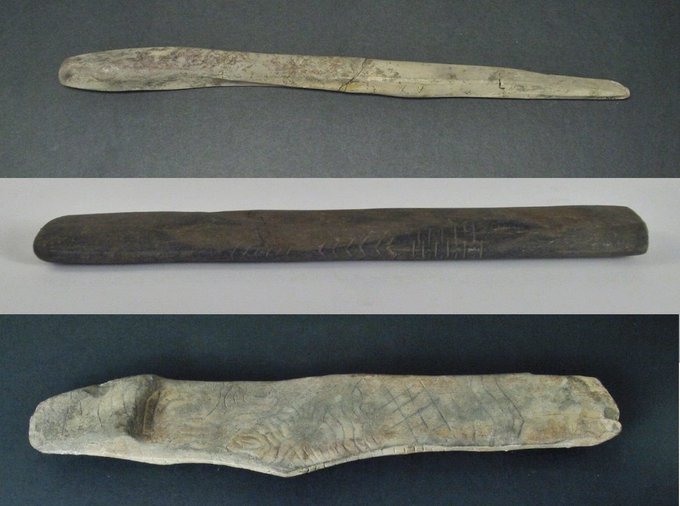
The other day I came across the article "Big Fish Hunting: interpretation of stone clubs from Lepenski Vir" by Ivana Živaljević researchgate.net/publication/28…
In this paper, the author proposes that these objects were in fact stone clubs or mallets, which may have been used in fishing as stunners. Not any fish fishing...Sturgeon fishing... 
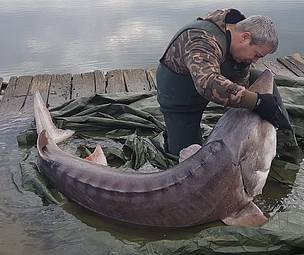
These giant fishes were, until very recently abundant in Danube river. They are migratory fishes, which spend most of their life in the Black and Azov sea, but migrate every spring into rivers to spawn... 
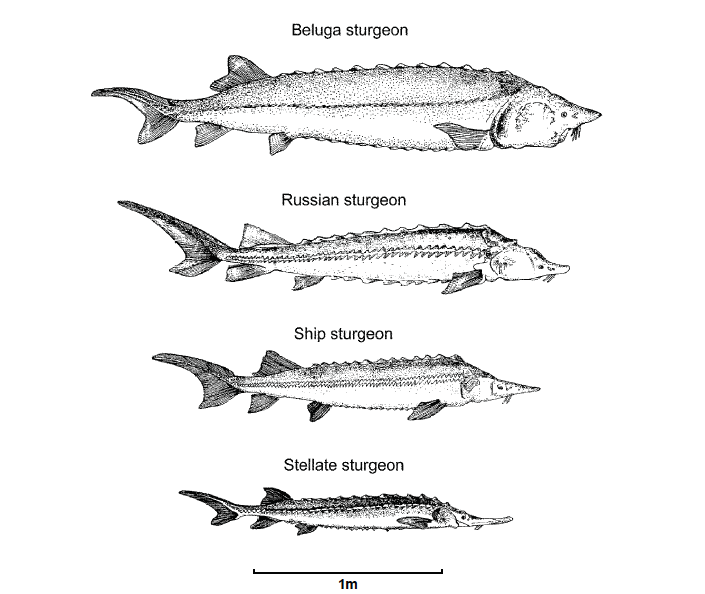
And they are easily caught using fish traps. 19th c. sturgeon traps in the Danube Iron Gates gorge were described as follows: The narrow branches of the Danube are disrupted [by] double post structures made from timber, arranged in a V-shape, opening downstream... 
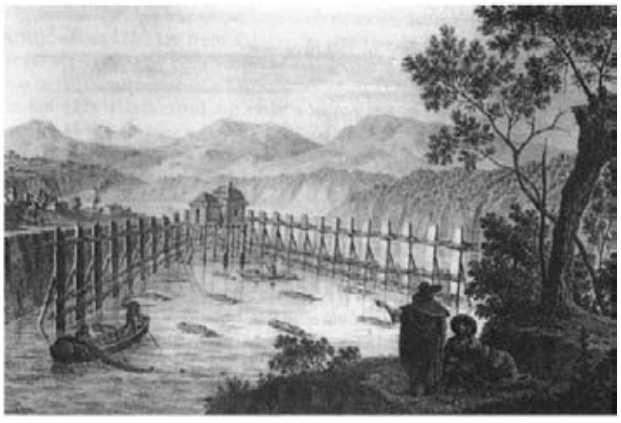
Once the sturgeons enter, it is not their habit to turn downstream. As they proceed in the ever-narrowing funnel, they wind up in the 'death chamber' at the end...” All you need to do then is kill it and drag it out of the water...
Danube Iron Gates gorge is exactly where Mesolithic Lepenski vir settlement was located. We know that people from Lepenski vir were fishermen, judging by the huge number of fish bones found in the settlement, particularly sturgeon bones...
There is no evidence how Lepenski vir people caught sturgeons, but we can assume that they used fish traps used by fishermen world over to catch migratory fish, either in rivers or in tidal seas. en.wikipedia.org/wiki/Fishing_w… 
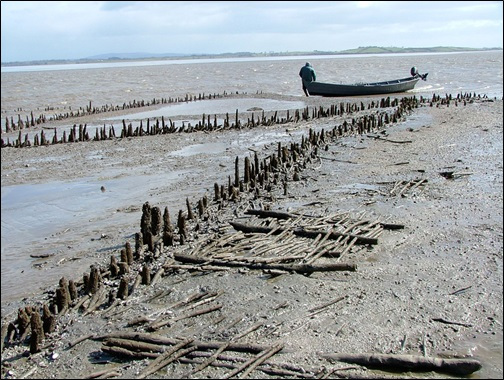
Ivana Živaljević proposes that once sturgeons were stranded inside the "death chamber" at the end of the trap, that they were basically clubbed to death using stone mallets... 
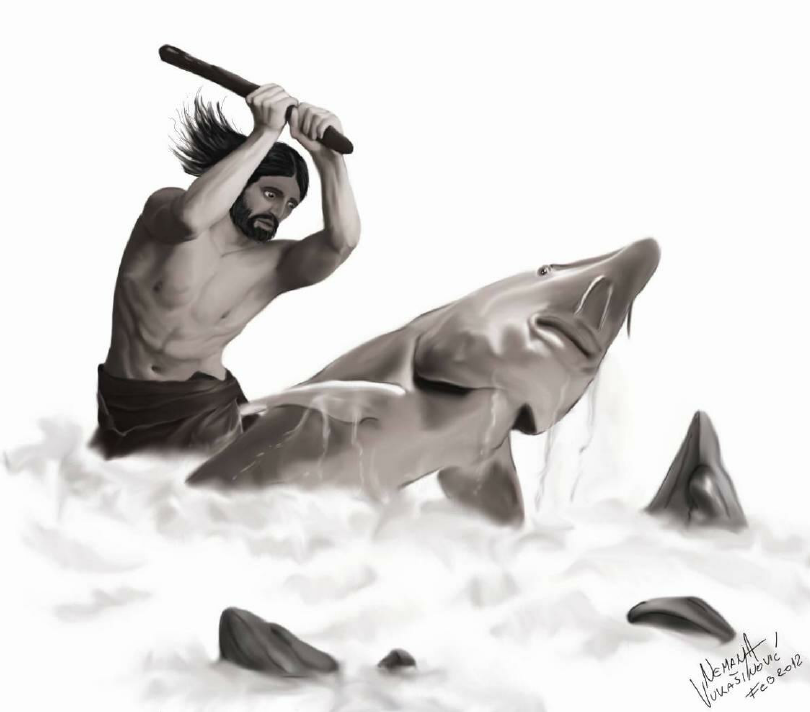
If you are wondering why they didn't use spears to finish the fish off, these are armored fish with thick bony plates protecting their heads and their bodies... 
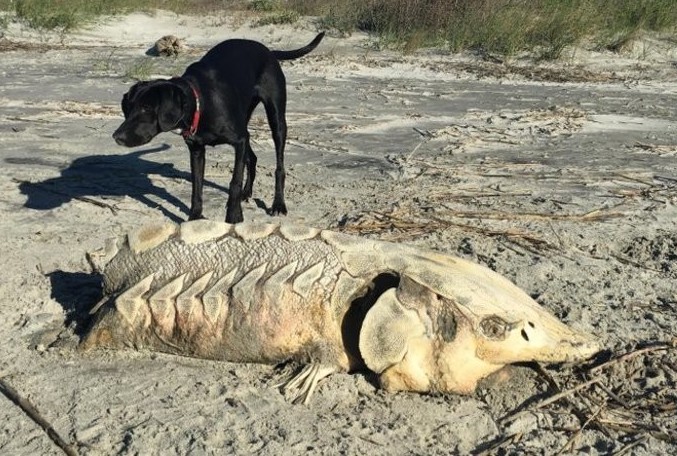
So basically the easiest way to kill these monsters was to smash their skulls with clubs, mallets. Like the above "stone scpetres"? What do you think? Plausible? Would a longer wooden club been better for this? I don't know...
Ivana Živaljević says that "The massive and often ornamented stone clubs were initially interpreted as 'magic' and 'ritual' devices; however, it should be noted that the 'ritual' and 'profane' uses of an object need not exclude one another"...
There is one reason why Ivana Živaljević might be right in thinking that maybe these stone objects were both stone mallets used for killing giant sturgeons and sacred sceptres...
One other thing found in many Lepenski vir houses is this: a statue carved out of a large river pebble (boulder). It is believed by many archaeologists that it depicts a human-fish hybrid...And not any fish. A human-sturgeon hybrid... 
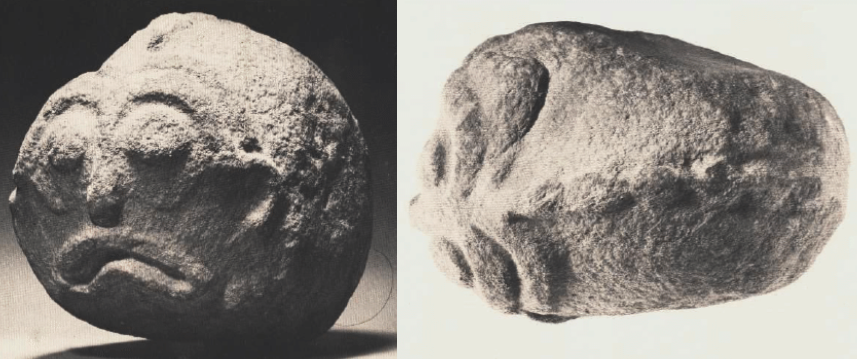
The row of bumps on the statue's back resemble sturgeon spinal scutes. But also human spinal vertebrae... 

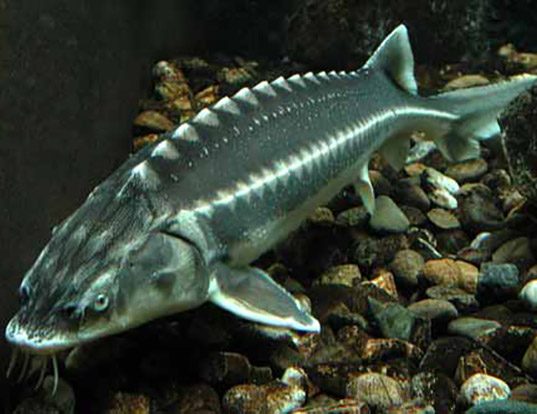

The large downturned statue mouth resembles mouths of large sturgeons once caught in the Danube river. But also human mouths...Sad human mouths... 

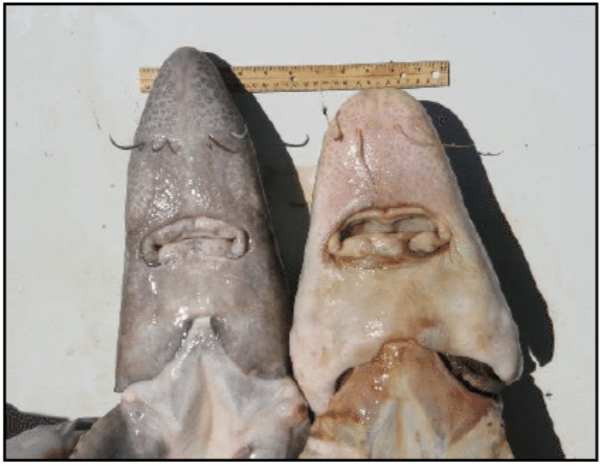

So it is possible that Lepenski vir people didn't see sturgeons as just "giant fishes"...According to one of the Serbian archaeologists "sculpted boulders from Lepenski Vir could represent metamorphosis of the deceased into fish"...
Who knows...But there is definitely something fishy going on here...
Few resources about sturgeons in Danube
d2ouvy59p0dg6k.cloudfront.net/downloads/18_2…
research.ed.ac.uk/portal/files/5…
Few resources about sturgeons in Danube
d2ouvy59p0dg6k.cloudfront.net/downloads/18_2…
research.ed.ac.uk/portal/files/5…
By the way, did you know that the migration of giant sturgeons up Danube river started every year "as soon as the the snow started melting, and water level started to rise, in late February, early March". In pisces...Another animal calendar marker oldeuropeanculture.blogspot.com/2016/11/fishes…
• • •
Missing some Tweet in this thread? You can try to
force a refresh


